On a warm Ramadan evening, despite the cool breeze, and on the banks of the Nile, Egyptian-French artist Abdel-Razek Okasha hosted an iftar at Darna Museum. The event was attended by a distinguished group of writers, artists, academics, and media professionals. The evening concluded with a special tribute to poet, novelist, and translator Ashraf Aboul-Yazid, in recognition of his creative journey that has transcended borders, leaving his mark on the global literary landscape.
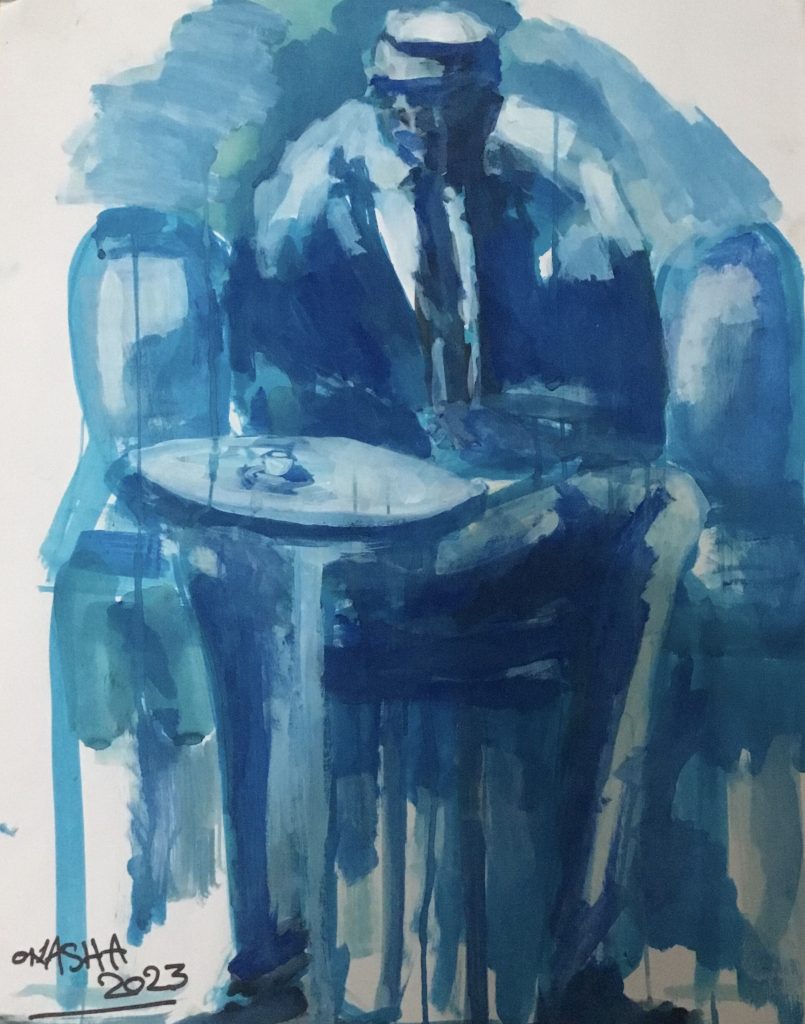
The Thinker
The Reasons for the Tribute
Born in Banha, Qalyubia Governorate, Ashraf Aboul-Yazid carved his path in the world of literature and journalism, becoming one of the most influential cultural voices in the Arab world. With over 47 published works spanning poetry, novels, translation, and criticism, his writings have been translated into more than ten languages, reaching a broad international audience.
For many years, his name was closely associated with Kuwait’s Al-Arabi magazine, where he worked as a writer, journalist, and critic, traveling across capitals and cities, carrying his cultural message to the world. Though he has been based in Egypt for the past eight years, his work remains boundless. He has traveled extensively, honored as a guest, researcher, and translator, contributing to the founding and leadership of literary and journalistic unions across Asia, Africa, and the Arab world.

Creativity Knows No Borders
Describing Ashraf Aboul-Yazid’s literary career, international artist Abdel-Razek Okasha likened him to “an eagle soaring high in the literary sky, spreading his creativity with a deep love for his homeland and unwavering dedication to his vision.” At Darna Museum, his presence was commemorated in a special way, with the establishment of a library dedicated to his literary works, preserving his journey and achievements.
Okasha stated:
“Honoring Ashraf Aboul-Yazid at Darna Museum is not merely a celebration of the individual, but a recognition of his creative contributions that illuminate the cultural scene beyond affiliations and exclusivity. He is an independent intellectual, unbound by narrow classifications, guided by love and peace, weaving words into bridges that lead to broader horizons… This tribute is part of Darna Museum’s ongoing tradition of celebrating Arab creatives who leave a profound impact on the cultural scene. Undoubtedly, Ashraf Aboul-Yazid is among those whose works transcend time and place.”
A Companion on the Journey and a Living Memory
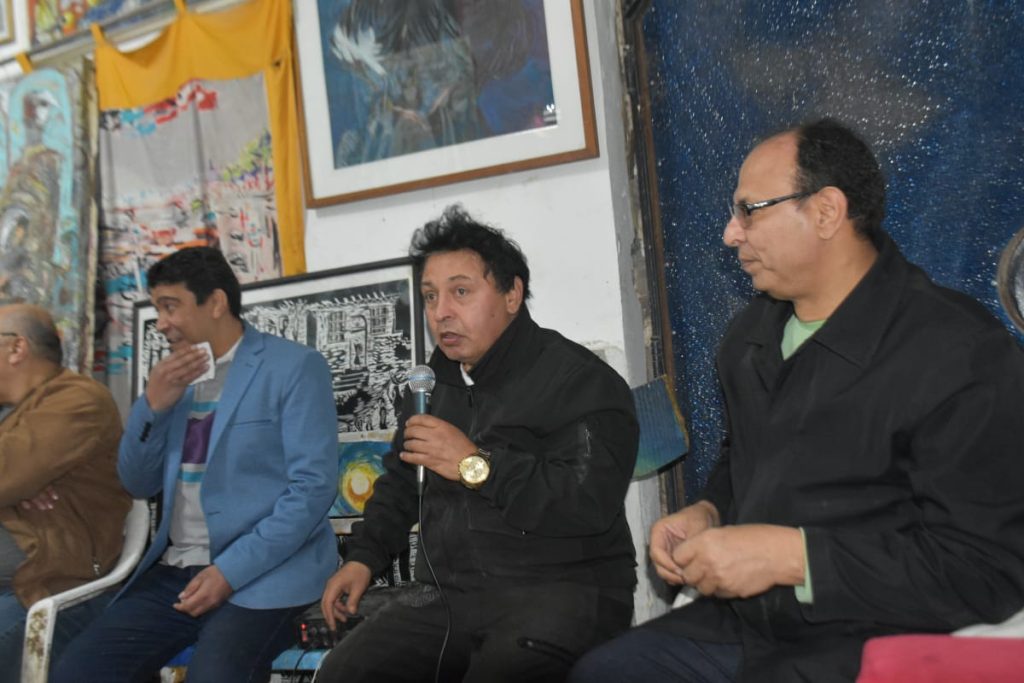
Adel Al-Sanhouri next to Abdel Razek Okasha, photographed by Adel Noufel
Among the prominent figures attending the evening was veteran journalist Adel Al-Sanhouri, described by Okasha as “a companion on the journey and a living memory.” Reflecting on their past, Okasha recalled:
*”At Darna, where memories fill the space, my mind takes me back to a moment in time shared with my mentor and friend, Adel Al-Sanhouri. It was the early days of our journalism careers, around 1990 or maybe 1991, when I entered the office of Misr Al-Fatah newspaper in Dokki with my elder brother and mentor, Taha Khalifa, to receive my journalist ID. That day, Emad El-Din Hussein, now the editor-in-chief of Al-Shorouk, sat in silence, lost in thought. In the spacious hall, next to the wall, stood a sculpture on a table. I turned to my senior colleagues and said:
‘The newspaper should have an art exhibition, just as it has a cultural salon bustling with discussions. Only a week ago, we held a seminar with Nour El-Sherif about the film Naji Al-Ali.’
Talat Ismail, the responsible editor, gave me a contemplative look, calm and dignified, full of depth and meaning, as if to say:
“Abdel-Razek, we need to refine this idea, we need to edit!”
Amidst the blend of seriousness and humor, skepticism and certainty, Adel Al-Sanhouri spoke, his vibrant spirit filling the room with joy, debate, loyalty, and humanity. He smiled widely at me and said:
“Listen, Abdel-Razek, I don’t think this is your place… You should travel instead!”
And so, the days passed. I traveled to Paris, and Adel traveled to the UAE. But despite the distances, our questions, messages, and occasional meetings never ceased—once at a book fair, another time at a publishing house, sometimes via Facebook. He was a refined Zamalek supporter, while I was a die-hard Ahly fan, yet we never argued or disagreed. Then came the long-awaited reunion after thirty years… over a Ramadan iftar, where we reminisced and shared stories. As I bid him farewell, as always, my heart spoke:
“How pure-hearted you are, how great you are, dear teacher and friend. My love and respect for you will always remain.”

publishing talk
Literature, Publishing, and Photography
From journalism to publishing, Okasha praised Matoun Al-Muthaqaf Publishing House and its professional team, which publishes the novels and critical works of major authors. He highlighted its founder, Khaled Adly, a cultured young publisher, alongside his Yemeni partner, Dr. Saleh Al-Diwani, describing the publishing house as a “respected cultural institution.” He also noted that Matoun Al-Muthaqaf operates alongside Dar Akwaan, both serving as exemplary models of intellectual publishing.
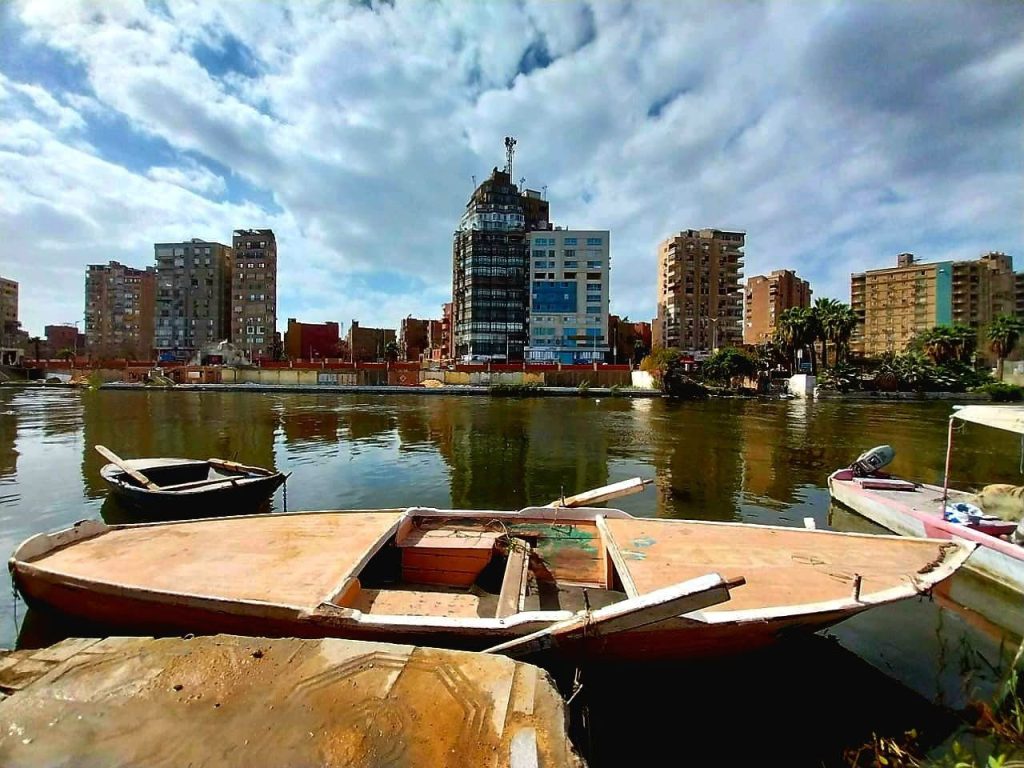
Hossam Rabie‘S photo of the River Nile at Darna Museum
Photography also had its share in the evening, with the presence of renowned Egyptian photographer Hossam Rabie, one of Egypt’s leading photographers, known for his dedication to documenting Egyptian heritage, antiquities, and ancient history through his private studio in Mansoura.
Following the bombing of the Daqahliya Security Directorate in Mansoura, Rabie proposed establishing an international biennale in the city to promote culture and arts as a means to counter terrorism, reflecting his belief in art as a tool for peace and understanding. Through social media, he engages with his audience, sharing his photographic works and artistic projects, thereby fostering artistic and cultural awareness. His professionalism was evident in the captured images of Darna Museum and the Ramadan gathering.

 From Qorsaya Island to Al-Muizz Street
From Qorsaya Island to Al-Muizz Street
During the evening, Dr. Walid Shaaban invited attendees to an upcoming gathering at Al-Muizz Street, where he was born and specialized in its study. He spoke of its historical significance, describing it as “the heart of historic Cairo, an open-air museum of Islamic architecture.” Stretching 1,200 meters, Al-Muizz Street was established during the Fatimid era in 969 AD as a central axis of the Fatimid capital and remains a testament to successive Islamic periods.
The street has witnessed the birth of many influential Egyptian figures, including: Imam Al-Shatibi, a leading scholar of Quranic recitation and interpretation. Historian Taqi Al-Din Al-Maqrizi, who documented Cairo’s history. Sheikh Muhammad Abduh, the renowned reformist and intellectual. The Sultans Buried in Al-Muizz Street
The street also houses the tombs of many Mamluk sultans and princes, including: Sultan Qalawun, buried in the Qalawun Complex, one of the street’s most important monuments. Al-Nasir Muhammad ibn Qalawun, buried in Al-Nassir School. Sultan Barquq, buried in the Khanqah of Faraj ibn Barquq. The evening at Darna Museum was not just a tribute but a celebration of culture, literature, and history, bringing together the past and present in a space dedicated to the preservation of creative and intellectual achievements. During a conversation between the audience and the historian, everyone became familiar with the architectural planning of different urban elements: the khan, the hāra, and the darb. Al-Mu’izz Street is distinguished by its traditional layout, which incorporates various architectural styles, including: The Khan: A marketplace or commercial complex, with the most famous example being Khan Al-Khalili, located near the street and considered one of the oldest markets in the Islamic world. The Hāra: A narrow alley branching into houses and residential buildings, traditionally used to separate residential neighborhoods from commercial areas. The Darb: A small street branching from the alleys, often leading to mosques, sabils (public water fountains), or religious schools.
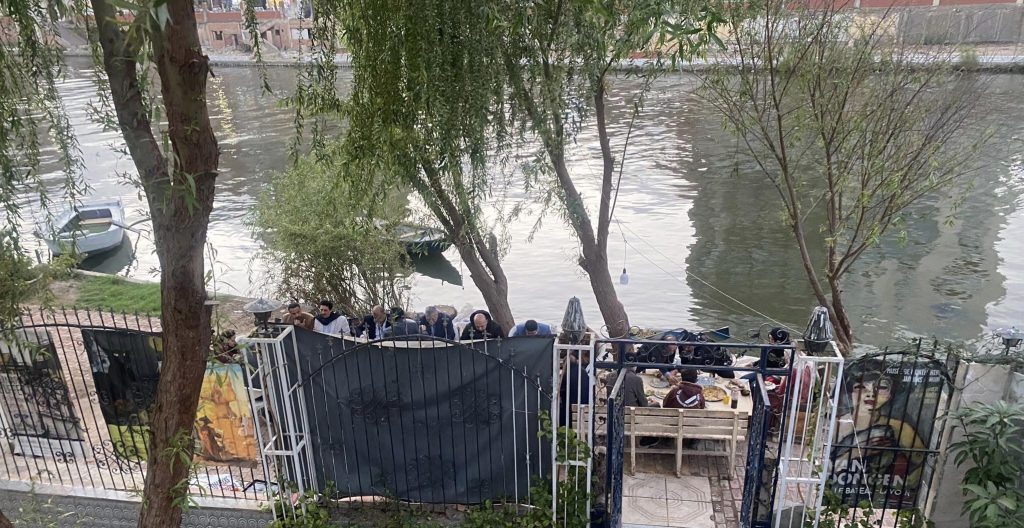
Ramadan Breakfast at Darana museum
Dr. Walid Shaaban highlighted some of the most magnificent Islamic landmarks along Al-Mu’izz Street, including: Al-Hakim bi-Amr Allah Mosque, the second-largest mosque in Cairo by area. The Qalawun Complex, which houses a school, a hospital, and a mausoleum. Bayt Al-Suhaymi, a unique example of Ottoman residential architecture. Muhammad Ali Sabil, reflecting the splendor of Ottoman design in Cairo.

Mohamed Al-Shafei
Al-Shafei at the Autumn Salon
The evening of reminiscence continued with a speech by writer Mohamed Al-Shafei, the former editor-in-chief of Al-Hilal magazine, who was invited to lecture at the Autumn Salon in Paris. Abdel-Razzaq Okasha served as vice president of the salon and was the first Arab or African to join this historic artistic institution, previously limited to members from Western Europe.
Al-Shafei recalled stories about Okasha, the Parisian flâneur who knew every corner of the City of Lights and was responsible for many significant cultural events that brought Egyptian cultural icons to international audiences.
Poems from Al-Gamaliya to Upper Egypt
Before and after the iftar, guests at the Ramadan evening gathering listened to poetry by two poets: Talaat Ismail, known as The Poet of Upper Egypt and Hamed Hassan Imam, known as The Poet of Al-Gamaliya. Both presented different styles of zajal (colloquial poetry), reflecting the spirit of their respective regions, the humor of Egyptian folk culture, and a deep pride in local traditions.
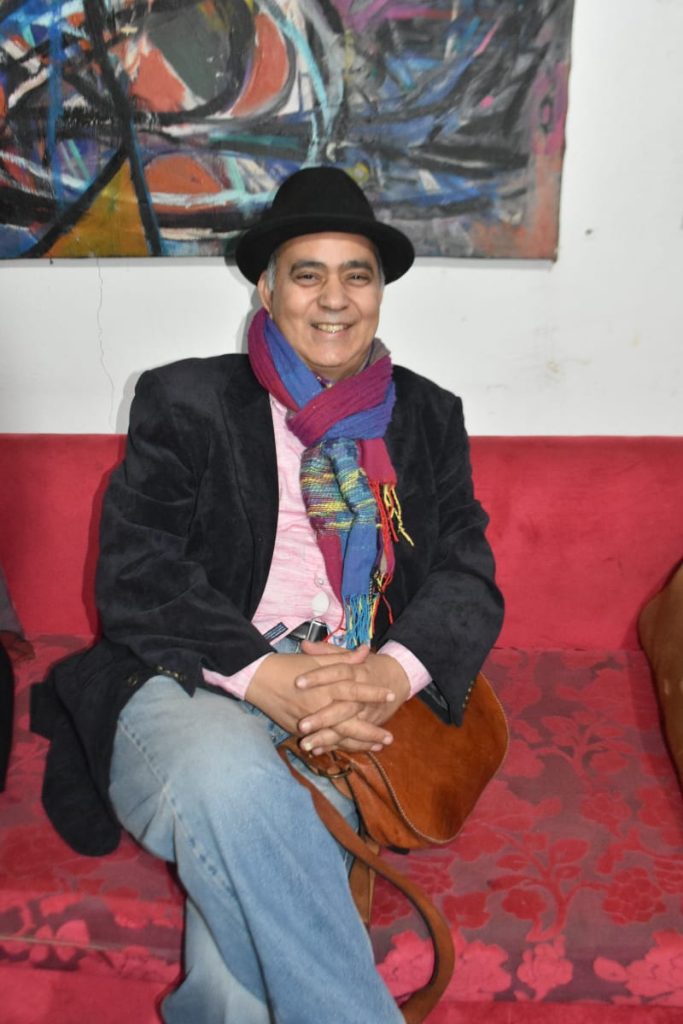
Ashraf photographed by Adel Noufel
Blood Became Coca-Cola
Thirty years ago, poet Ashraf Abu Al-Yazid published two poetry collections—one in classical Arabic and the other in colloquial Egyptian. Some of his friends advised him to choose one path, and he ultimately committed to classical Arabic, through which he has since published over 45 books, spanning poetry, novels, travel literature, children’s books, and translations.
During this exceptional evening, the honored poet chose, for the first time, to read from a poetry collection that had remained unknown for three decades. Some of its poems were initially published in Sabah Al-Kheir magazine and Akhbar Al-Adab newspaper. The selected readings received warm applause from attendees from Egypt, Tunisia, and Yemen.
Ashraf Abu Al-Yazid explained that the title of the collection, Blood Became Coca-Cola, was inspired by a cover design by the late artist Mohieddine Ellabbad for the novel The Committee by Sonallah Ibrahim, in which the colonial drink was used as a metaphor for American hegemony, which popular sentiment resists.
Poem: Blood Became Coca-Cola
My heart is in danger,
I can no longer hear its laughter or its cries.
Its ribs no longer split or break.
Nothing sweet can bring it joy,
Nothing bitter can wound it.
My heart has turned to stone!
It hides a tear like a miracle,
While the rest fall like rain.
What has it lost?
Are we not merely reflections of fate?
Has the impending doom
nested in my heart until it shattered?
Have people not yet found a way
to change it, stain it,
and drown it in the spreading corruption?
I remember when my young heart was full of sugar,
When it never held a ruler in its hand.
People danced inside it,
No roads led it away.
Now, my hand presses the remote, tickling it,
Traveling endlessly through images,
Yet none of them delight it.
The leader’s wife shines like the moon,
The gang holds a conference,
Bullets rain down on the country,
Fire devours the trees,
And disgraceful assaults continue—
Yet not a single vein within me has erupted!
Blood never turns into water,
That’s true.
But maybe water could help it.
Blood has become Coca-Cola.
Poem: When We Were Young
When we were young,
We laid our heads down to sleep,
And dreams filled the night
until morning came.
Now, despite the sleeping pills,
We toss and turn all night,
Craving just a bit of sleep,
But when we do sleep, nightmares wake us.
When we were young,
Black-and-white images of heroes
painted our world in all colors.
Now, colored heroes—like rainbows—
are washed in a thousand coats of paint.
It doesn’t matter;
Nothing makes us happy anymore,
Nothing,
except sorrow.
When we were young,
We cheered for our friends
when their grades came out,
when we saw them in their holiday clothes,
or at their wedding ceremonies.
Now, we no longer celebrate,
Because, honestly,
we no longer have friends.
When we were young,
We would buy candied almonds with small change,
Or drink carob juice,
And we would sing about the sweetness of life.
Now, they wrap the streets in cellophane,
With chocolates and gum inside—
But we taste nothing.
Did they remove the fuse of pleasure,
Or did we simply
lose our tongues?
When we were young,
We read the verses of the revolution,
Written by the revolutionaries.
The world tried to call them liars,
But we learned that a revolution
was never just a book,
That revolutionaries were never just writers.
Illiteracy blinded us from seeing the true words,
And left us living
in eternal sleep.
Oh, if only we had never grown up…
And stayed young forever.
________________
Published under International Cooperation with "The Silk Road TODAY"
Comments